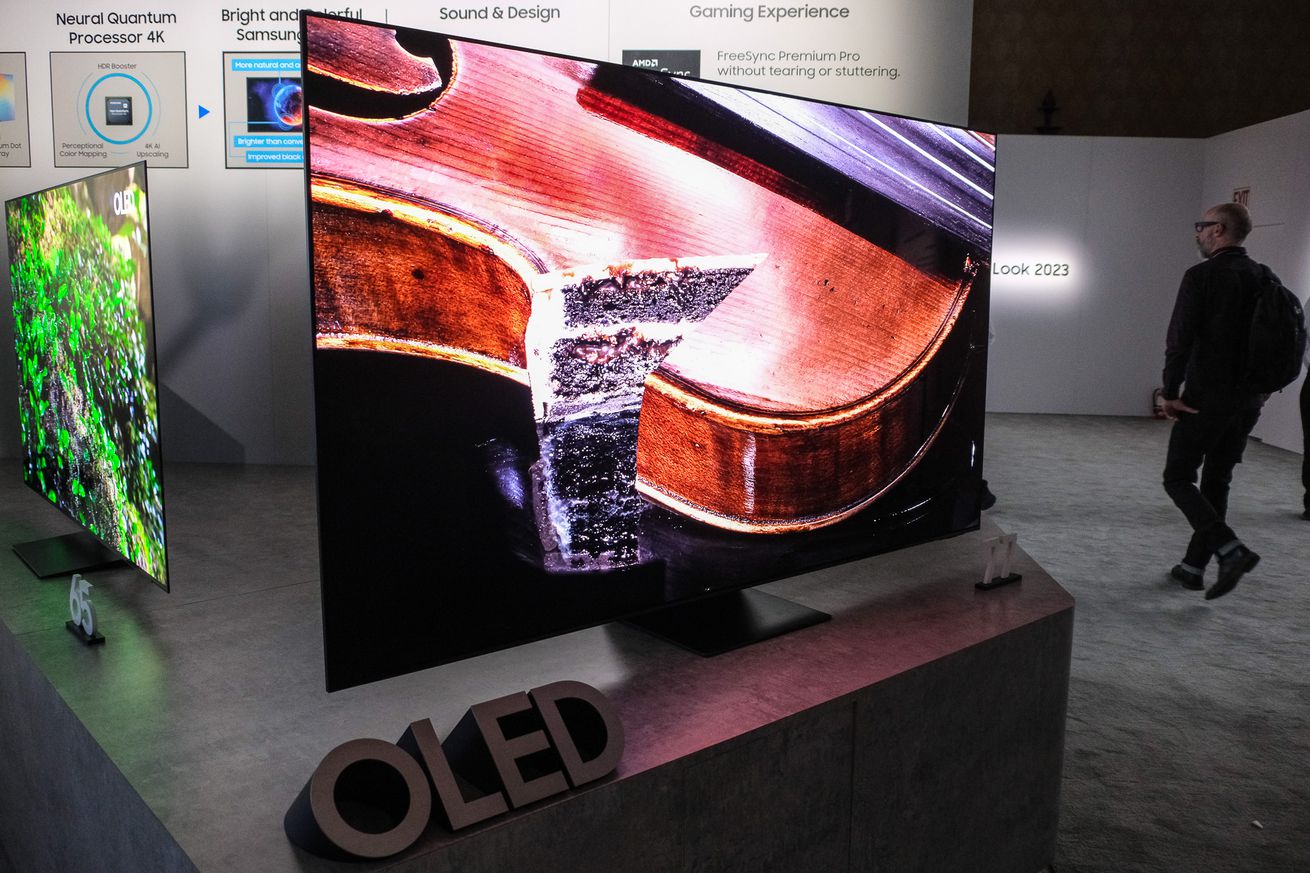
Samsung prices its super bright 77-inch QD-OLED TV at $4,500
Samsung announced its second-generation QD-OLED TV lineup back at CES, with a new 77-inch model joining the 55-inch and 65-inch sizes that were offered with last year’s S95B. Regardless of what size you prefer, these TVs utilize the very latest quantum dot OLED panels from Samsung Display, which promise significant brightness gains — potentially crossing 2,000 nits — and the S95B was already among the brightest OLEDs on the market. Now we know how much the 77-inch S95C will cost: it’s priced at $4,499.99.
That’s more expensive than LG’s 77-inch G2 (the company hasn’t yet announced pricing for its 2023 series yet), but not outlandishly so: the G2 originally had an MSRP of $4,199.99. And I’m sure we’ll see discounts on Samsung’s OLEDs before long. To help reduce sticker shock, Samsung is throwing in free at-home installation if you preorder before February 20th. The S95C is slated to begin shipping by the 15th.
It’s looking to be a very good year for buying a new OLED TV. By hitting new all-time highs in brightness, both Samsung and LG are trying to shed the long-held notion that OLEDs aren’t the best choice for bright viewing environments. That’s an area where Mini LED LCD TVs have managed to win out in recent years. Both are going about it in different ways: Samsung’s making the most of QD-OLED panel technology improvements, while LG is using new algorithms and a layer of micro lenses that more efficiently direct the light produced by its G3 OLED toward viewers.
The OLED brightness wars have begun
Samsung’s S95C is a powerhouse of a TV beyond its visuals: it supports 4K gaming at up to 144Hz, offers a comprehensive Gaming Hub (with Microsoft’s Xbox cloud streaming app still locked down as an exclusive among TV makers), and it has a built-in SmartThings Hub. The thin TV comes with a One Connect box that all your devices will run into. But the one sticking point with Samsung, as ever, is a complete lack of support for Dolby Vision; the company continues to push HDR10 Plus as its preferred option.
I’ll be spending more time with Samsung’s 2023 TV lineup soon, so stay tuned for deeper impressions than what was possible from the Las Vegas CES show floor.

